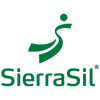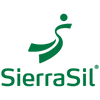What is DOMS?

DOMS is the muscle soreness and stiffness you feel a few hours or the day after a hard work-out.
DOMS stands for Delayed Onset Muscle Soreness.
This muscle soreness and ache you feel in your muscles is different from a muscle strain or torn ligament. A strain or tear is felt immediately.
DOMS, however is often not felt until the day after your run, session in the gym, extra tennis game, or challenging CrossFit workout of the day (WOD).
Your thighs or quads might ache when you walk up and down the stairs or when you’re simply walking around your office.
Whenever you work out or exercise, you introduce small micro-tears to your muscles, the process of healing these micro-tears is what builds and strengthens your muscles.
How Does Delayed Onset Muscle Soreness Impact Inflammation?
The micro-tears in your muscles also cause inflammation in your muscles. This inflammation is what causes muscle soreness or DOMS.
This deep muscle ache, stiffness, soreness, and inflammation doesn’t happen after every workout, run, or tennis game. DOMS only occurs when you’ve placed your muscles under new stress.
This deep muscle soreness is a very different feeling than sore and stiff joints, it literally feels like your muscles are on fire.
DOMS is a signal that you’ve pushed your body and placed your muscles under extra load and strain. The good news is that DOMS won’t last forever and that you can take measures to lessen the impacts of DOMS.
This stress doesn’t need to be extreme and in fact, it can be what appears to be a minor change in your activity level that causes DOMS.
Maybe you went on a long weekend hiking trip for the first time and on the third day your legs were super heavy and achy – this is DOMS.
Perhaps you’re training for a marathon and a couple days after your first long run, your upper thighs are super sore that you feel like you can’t run – this is DOMS.
Or if you’ve recently joined a gym and have started lifting weights, you might have heavy sore arms two days after your first-time doing bicep curls – this is DOMS.
DOMS typically hits within the 24 – 72-hour period after an intense or new activity. This delayed reaction has to do with how the body heals the micro-tears, remember it takes time for the inflammatory healing process to start building in your body.
Keep reading to learn the facts on DOMS, including the symptoms of DOMS, and how you can recover naturally from DOMS.
Don’t worry if you’re experiencing DOMS – the deep muscle heaviness and aches will go away.
Learn about SierraSil’s research into DOMS and inflammation.
The No Pain No Gain Myth
Before we get into the facts behind DOMS, we want to bust the no pain no gain myth.
Yes, you may feel some muscle soreness when you stress your body differently.
However, experiencing pain in your muscles after working out, is not a good thing or a sign that you’re building real fitness.
It’s important to understand that you don’t need to suffer to benefit from your exercise routine. Yes, you may have sore legs after a sprint workout or a heavy squat session in the gym. But this should be an anomaly and not a normality.
Remember that the pain in your muscles can be a sign of real muscular and tissue damage. Instead of the no pain no gain mentality, we want you to have a regular exercise for long health mentality.
What Are the Symptoms of DOMS?

The symptoms of DOMS can include:
- Swollen muscles that are sensitive to touch.
- Stiff muscles that makes it challenging to walk or carry household items.
- A feeling of weakness in the impacted muscles. It might feel like your thighs can’t support your weight when you walk down the stairs.
- Stretching exacerbates the sensations in your muscles.
It’s important to be aware of how your body feels a few days after the onset of DOMS.
If you’re experiencing a sharp pain in a muscle or a persistent ache that is very sore, do not ignore these signals. This can be an indication that you may have done some damage to your muscles and tissues, such as a strain, sprain, tear, or some type of tendinitis.
It’s a good idea to see a physiotherapist or other health care practitioner if you’re experiencing these kinds of sensations.
How to Recover From DOMS
To recover from DOMS, do the following:
- Before your workout make sure you warm-up your body. Do some light stretching, a brisk walk, a short ride on an exercise bike, etc. You want to wake up your muscles and body systems to prepare them for what is ahead.
- Pay attention to your diet. Eat a pre-workout snack so your body has some fuel to power your walk, run, bodybuilding session, hike, etc.
- Make sure you’re well hydrated. Your muscles require water to support you through your workouts. Drink before, during, and after your workout. If you’re exercising in the hot weather, consider using a natural electrolyte supplement to help replace the sodium, vitamins, and minerals you lose in your sweat.
- After your workout, it’s important that you help your muscles recover. Try to eat a high-carb snack 30-45 minutes after your workout. For example, if you’ve just completed your Sunday long run, you should have a snack such as a couple slices of bread with natural peanut butter or drink a specialized recovery smoothie.
- Remember to stretch afterwards. Don’t end your run at your front door and immediately get on with your day. Take a few minutes to stretch out your upper thighs, your calf muscles, your hamstrings, and lower back. This is a good time to finish the water in your water bottle and to drink a recovery smoothie.
- As well as stretching, it can be helpful to use a tennis ball to relieve muscle soreness. Thanks to the power of myofascial release, a tennis ball is the ideal size and shape to help give your muscles a gentle and targeted massage.
- Keep working out. You need to get your muscles moving, this stimulates the blood flow and helps reduce the symptoms of DOMS. Sitting and doing nothing can make you feel tight and then make it harder to get back to your regular work-out.
- Incorporate natural supplements into your daily diet. Recent research has highlighted the benefits of taking curcumin on a daily basis to help mitigate the impacts of DOMS. Because curcumin has anti-inflammatory effects, this natural ingredient can help you recover from DOMS.
These steps can help you limit the sensations of DOMS and reduce inflammation in your body so you can get back to your favorite activity.
We want to remind you that SierraSil’s Joint Formula 14 and Joint Formula Curcumin have been clinically proven to aid in the prevention of and recovery from DOMS.
DOMS Doesn’t Need to Slow You Down
Don’t let DOMS slow you down or interrupt your healthy living routine.
Remember our tips on how to prevent and recover from DOMS.
Follow the basics of a good warm-up, a healthy balanced diet, proper hydration, stretching after you exercise, using a tennis ball for myofascial release, and providing muscle support with a natural anti-inflammatory supplement such as curcumin and SierraSil.
Your body will thank you, your muscles will strengthen, you’ll reduce inflammation, and you’ll be able to continue doing the exercises and activities you enjoy.



